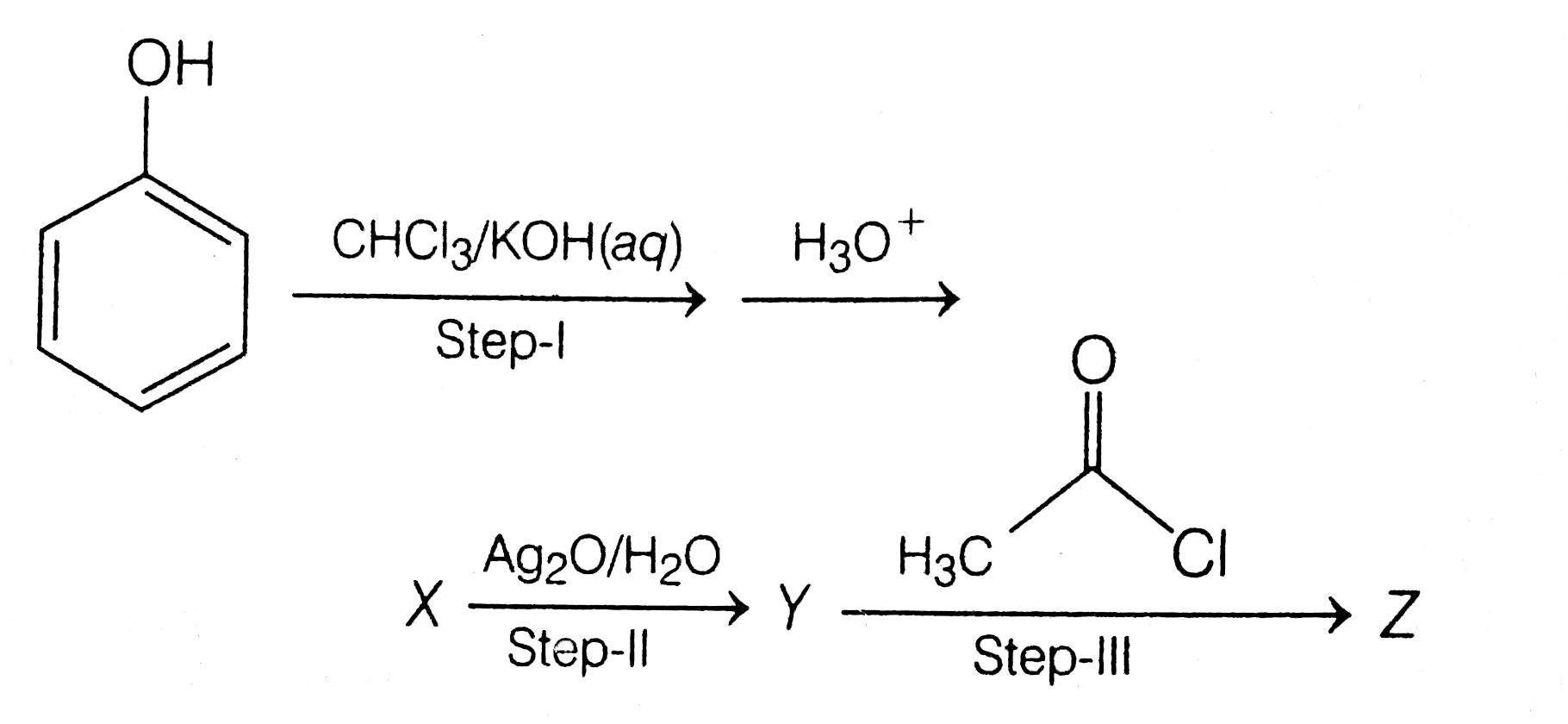In a multi-step reaction, the rate is determined by conisdering the………….step.
The slowest step in the reaction is the rate determing step.
Topper's Solved these Questions
- CHEMICAL KINETICSBOOK - DINESH PUBLICATIONCHAPTER - CHEMICAL KINETICSEXERCISE - Higher order thinking skills (hots) question
18 Videos
- CHEMICAL KINETICSBOOK - DINESH PUBLICATIONCHAPTER - CHEMICAL KINETICSEXERCISE - Multiple Choice Questions
32 Videos
- CHEMICAL KINETICSBOOK - DINESH PUBLICATIONCHAPTER - CHEMICAL KINETICSEXERCISE - Long Answer type question
14 Videos
- CHEMICAL BONDING AND MOLECULAR STRUCTUREBOOK - DINESH PUBLICATIONCHAPTER - CHEMICAL BONDING AND MOLECULAR STRUCTUREEXERCISE - Unit Test - 1
20 Videos
- CHEMICAL THERMODYNAMICS AND CHEMICAL ENERGETICS BOOK - DINESH PUBLICATIONCHAPTER - CHEMICAL THERMODYNAMICS AND CHEMICAL ENERGETICS EXERCISE - Exercise
507 Videos
Similar Questions
What is the rate determining step of a reaction ?
View SolutionConsider the statements for given reaction

1. In the first step, there is breaking of C - O bond
2. The second step is SN2 reaction
3. There is retention of configuration in the first step
4. There is inversion of configuration in the second step
View Solution
Knowledge Check
The rate determining step of a reaction is the step
Awhich involves the minimum number of moleculesBwhich involves the maximum number of moleculesCwhich is the slowestDwhich is the fastestThe rate law expresison is given for a typical reaction, n1A+n2B→P as r=k[A]n[B]n2. The reaction completes only in one step and A and B are present in the solution. If the reaction occurs in more than one step, then the rate law is expressed by consdering the slowest step, i.e., for SNl reaction r=k[RX]. If the eraction occurs in more than one step and the rates of the steps involved are comparable, then steady state approximation is conisdered, i.e., the rate of formation of intermediate is always equal to the rate of decompoistion of the intermediate. Conisder the reaction:
⎡⎢ ⎢⎣I2k2⇐⇒k12I(rapid equilibrium)H2+2Ik3−−→2HI(slow)⎤⎥ ⎥⎦
If we increase the concentration of I2 two times, then the rate of formation of HI willAIncrease four timesBIncrease two timesCRemain sameDCannot predictThe rate law expresison is given for a typical reaction, n1A+n2B→P as r=k[A]n[B]n2. The reaction completes only in one step and A and B are present in the solution. If the reaction occurs in more than one step, then the rate law is expressed by consdering the slowest step, i.e., for SNl reaction r=k[RX]. If the eraction occurs in more than one step and the rates of the steps involved are comparable, then steady state approximation is conisdered, i.e., the rate of formation of intermediate is always equal to the rate of decompoistion of the intermediate. Conisder the reaction:
⎡⎢ ⎢⎣I2k2⇐⇒k12I(rapid equilibrium)H2+2Ik3−−→2HI(slow)⎤⎥ ⎥⎦
Which of the following expresison is correct?Ad[HI]dt=k3k1k2[H2][I2]Bd[HI]dt=k1k3k22[H2][I2]Cd[HI]dt=k2[H2][I2]2DNone of these
The rate of reaction is determined by slow step reaction. The step is called
View SolutionAssertion :- In a multi-step reaction, the molecularity of overall reaction has no significance.
Reason :- Molecularity of a reaction is always equal to order of reaction.
View SolutionStatement -1: In Ak1−−→Bk2−−→C
If half life of A is very less as compared to B, then, net reaction is A to C with rate constant (k1×k2)
Statement-2: Slowest step is the rate determining step si B to C is rate determining step.
View SolutionIn the rate-limiting approximation for a two-step reaction, the overall rate of the reaction is always equal to the rate of the ……….. Step in the reaction mechanism.
View SolutionConsider the following reaction to answer the next three
questions:
In the above reaction. The reactive intermediate formed in
the first step(step-i) is
View Solution
